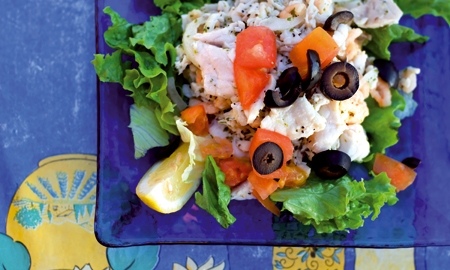Although a good product can sell itself, it often needs a small push. In the case of Peruvian agricultural products,
PromPeru – the country’s export promotion agency – has given them the impetus they needed to make their way into the mainstream global market. Today, worldwide demand for Peruvian products outstrips supply and given the various free trade agreements Peru has signed in recent years which have opened new markets, demand has nowhere to go but up.
The agricultural sector accounts for nearly 8% of Gross Domestic Product (GDP) and employs more than 1 million people directly and indirectly.
Historically, agriculture had always played an important role in Peru. Indeed, in pre-Colombian times, agriculture was the basis of the Andean society, which devised imaginative techniques like irrigation and terracing to combat the arid conditions found in a large part of the region.
Opportunities for investment... will definitively change the face of national agriculture, especially along the coast. Milton von Hesse,
Minister of Agriculture |
Nowadays, agriculture is primarily concentrated in the wetter parts of the country, yet the government is keen to develop the deserts where the soil is surprisingly rich in minerals and has the potential of supporting nearly any kind of agriculture production. Investment is being injected into strategic irrigation infrastructure development, including the diversion of water from rivers via canals and the building of dams. The Ministry of Agriculture has noted that irrigation projects, especially along the coastal desert areas, could expand the agricultural frontier by 225,000 hectares for exportable products.
Agriculture Minister Milton von Hesse said this month, that various agricultural land projects up for tender present “opportunities for investment that in the short term the country is offering to the international community, and that will definitively change the face of national agriculture, especially along the coast.”
Other investments target raising productivity, operational inefficiency, and the implementation of global standards, especially in the remotest areas, although it must be said that Peru’s agricultural products have for the most part gained a reputation for world-class quality.
Peru’s main exports are coffee, grapes and avocados, which enjoyed 80%, 73% and 94% growth respectively in 2011. Other major breadwinners are asparagus (in 2010 the country exported 138,600 tons of this vegetable at a value of $291 million, making it one of the top fresh asparagus exporters in the world), mangoes, peppers, artichokes, and cotton. Peru’s agricultural diversity stems from its three-pronged topographical diversity of mountains, jungles and deserts, which allows for everything from potatoes and corn to sugarcane and cacao.
Although quinoa – an edible seed that was once a staple food in the Andean region and is today popular in wealthy countries thanks to its highly nutritious qualities – is not as lucrative as the aforementioned products as of yet, at least, it is rapidly gaining momentum in Peru’s agriculture industry. Already, the country ranks as the world’s second largest producer after Bolivia. According to Promperu, the export value of Peru’s organic quinoa nearly doubled from $13.61 million in 2010 to $25.97 million just one year later.
In total, Peru’s agricultural exports reached $915.6 million in the first quarter of 2012, representing a healthy 16.6% increase over the same period in 2011. According to figures from the Ministry of Foreign Trade and Tourism, Peru’s exports of fruit and vegetables enjoyed an annual growth of 27% between 2000 and 2011, hitting an impressive $1.2 billion in 2011. In light of the results from Q1 2012, this year’s exports are well on their way to leaving that already record-breaking figure far behind.
If this trend continues – and growing global demand implies that it very well could – Peru could potentially become the world’s largest exporters of fruit and vegetables.

0 COMMENTS